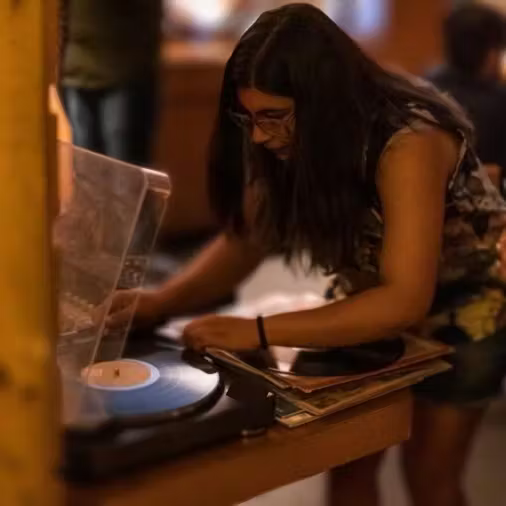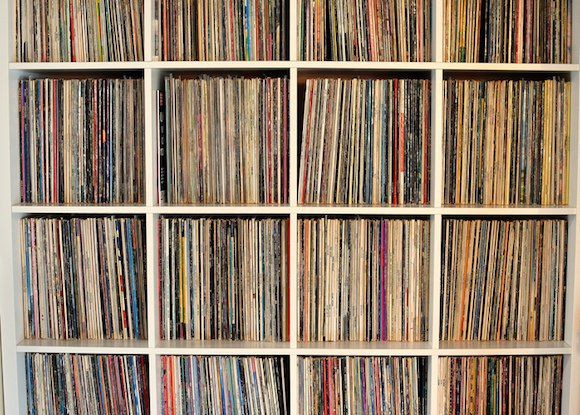Vinyl records are a treasure trove of music history, offering a nostalgic sound quality that has captivated audiophiles for decades. However, their delicate nature requires careful handling and storage to ensure they remain in excellent condition. Whether you’re a seasoned collector or just starting, proper storage techniques can preserve your records for generations. This article delves into everything you need to know about storing vinyl records, from environmental considerations to handling tips.
Why Proper Vinyl Storage is Important
Vinyl records are made from polyvinyl chloride (PVC), a material that is both durable and sensitive to environmental factors. Incorrect storage can lead to warping, scratching, and degradation of sound quality. Dust, heat, and humidity are vinyl’s worst enemies. To maintain your collection’s longevity, it’s essential to store them in an optimal environment.
1. Organize Your Collection
Alphabetical or Genre Sorting
Organizing your vinyl records makes them easier to find and reduces the handling of other records while searching. Common methods include:
- Alphabetical order: Organize by artist or album title.
- Genre-based organization: Separate records into categories like rock, jazz, or classical.
Keep Records Upright
Vinyl records should always be stored upright like books on a shelf. Stacking records horizontally can cause warping over time due to uneven pressure on the discs.
2. The Right Storage Environment
Temperature and Humidity Control
- Ideal Temperature: Vinyl records should be stored at temperatures between 65°F and 70°F (18°C to 21°C). Extreme heat can warp the records.
- Humidity Levels: Aim for 40%-50% relative humidity. High humidity can lead to mold growth, while low humidity can cause static buildup.
Avoid Direct Sunlight
Sunlight can heat and warp records as well as fade album covers. Store your collection away from windows or use UV-blocking curtains.
Ventilation
Ensure the storage area is well-ventilated to prevent dampness and musty odors.
3. Choosing the Right Storage Furniture
Dedicated Vinyl Shelves
Invest in sturdy, purpose-built furniture designed to support the weight of vinyl records. Popular options include:
- IKEA Kallax shelves: A favorite among collectors due to their strength and modular design.
- Custom-made shelves: These can be tailored to fit your space and aesthetic.
Storage Bins
If shelving isn’t an option, use sturdy storage bins made from non-reactive materials like wood or plastic. Avoid cardboard, as it can attract moisture and pests.
4. Protective Sleeves
Inner Sleeves
Replace old, worn inner sleeves with high-quality, anti-static options made of polyethylene or rice paper. Avoid paper sleeves as they can scratch the surface of the record.
Outer Sleeves
Protect album covers with outer sleeves made from polyethylene or polypropylene. These sleeves shield the covers from dust and wear while preserving their artwork.
5. Handling Your Records
Always Handle with Clean Hands
Oil and dirt from your hands can transfer onto the record, potentially damaging the grooves. Wash and dry your hands before touching them.
Hold Records by the Edges
Never touch the playing surface. Always hold the record by its edges and label to avoid fingerprints and scratches.

6. Cleaning Your Records
Regular cleaning removes dust and debris, improving sound quality and preventing damage.
Tools for Cleaning:
- Record brush: Use an anti-static carbon fiber brush to remove surface dust before and after each play.
- Cleaning solution: For deeper cleaning, use a record cleaning solution and a microfiber cloth or a cleaning machine.
- Stylus brush: Clean the needle (stylus) of your turntable to prevent dirt from transferring to your records.
7. Storing Rare and Valuable Records
For rare or high-value records, extra precautions are necessary:
- Archival-grade sleeves: Use acid-free, archival-quality sleeves for added protection.
- Climate-controlled storage: Consider storing valuable records in a climate-controlled cabinet or room.
- Insurance: Document and insure your collection if it has significant monetary or sentimental value.
8. Travel and Transport Tips
If you need to move your collection:
- Use sturdy, padded boxes specifically designed for vinyl records.
- Pack records upright and fill empty spaces with bubble wrap or packing paper to prevent shifting.
- Avoid leaving records in a car for extended periods, as temperature fluctuations can cause warping.
9. Common Vinyl Storage Mistakes to Avoid
- Stacking Records Flat
Stacking records horizontally can cause warping and make them difficult to access. - Using Poor-Quality Shelving
Weak shelving can collapse under the weight of vinyl. Always opt for sturdy options. - Neglecting Cleaning
Dust buildup can degrade sound quality and damage the grooves over time. - Exposing Records to Heat and Sunlight
Even brief exposure to direct sunlight or heat sources can warp records.
10. Digital Tracking of Your Collection
Consider cataloging your vinyl collection digitally. Apps like Discogs allow you to track your records, value your collection, and even connect with other collectors.
Also Read: – Where to buy vinyl records
Final Thoughts
Proper storage is crucial to maintaining the quality and longevity of your vinyl records. By taking the time to organize, clean, and protect your collection, you can enjoy your favorite albums for decades. Whether you’re preserving a small collection or an extensive archive, these tips will help ensure your vinyl remains in pristine condition.

An Electronics Engineer & A MBA in Marketing Graduate, Kinjal Gosar is a passionate audiophile herself. Starting her career at India’s biggest Consumer Electronics Retail Chain, her technical knowledge is amazing. Classic Rock has been a huge part of her life and her love for Music has always been evident in all her work. A vinyl collector herself, she loves spreading the joy of analouge while giving nothing but the best to her fellow vinylheads.






Comments (4)